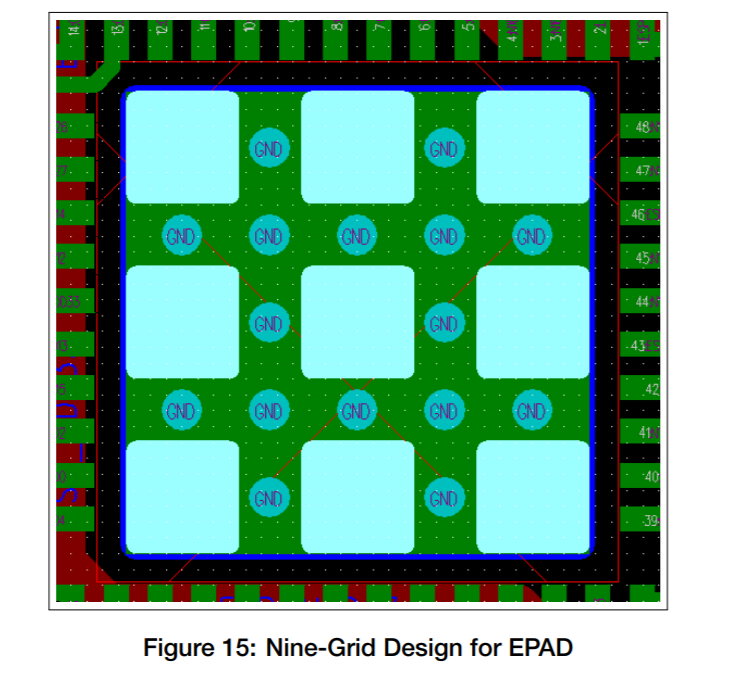Updated Answer - Based on Link In Comments
Right, so The image you posted of a nine-grid EPAD and the link you posted in the comments are completely different. One is a QFN package, and the other is a PCB module.
In the case of the linked part, there are 9 seperate pads, because the module itself has 9 seperate solder pads underneath it, rather than one large one. (though apparently looking at images, some variants have one pad, others have 9)
Assuming the dimensions are correct, the pattern you show in your first image appears to match.
There is nothing in the datasheet that prohibits having ground underneath the module, so you could easily connect everything with a ground plane on the top layer.
Furthermore, you don't actually need to solder the pad accorting to the datasheet, its connection is optional. If you are to connect it, they recommend ensuring that the amount of solder paste is minimised, which is why they have nine small pads for the paste layer.
The vias are there not to allow paste to wick away. They are intended to provide thermal transfer - copper is a better conductor than FR4, so having the vias allows the heat to escape onto inner copper layers and the reverse of the board.
Previous Answer - Based on the Figure 15 Image
Looking at the figure you've posted, I think the footprint you are using has perhaps confused the actual land pad for the solder paste.
"Figure 15" shows a QFN package with a single large central pad (green) with a single solder resist openning (blue).
The solder paste stencil is then to have 9 opennings (light blue) rather than one large openning. This is done to reduce the amount of solder under the device, which becomes necessary on larger QFNs. A 100% fill density could cause the device to float on the solder and prevent the pins from properly connecting.


